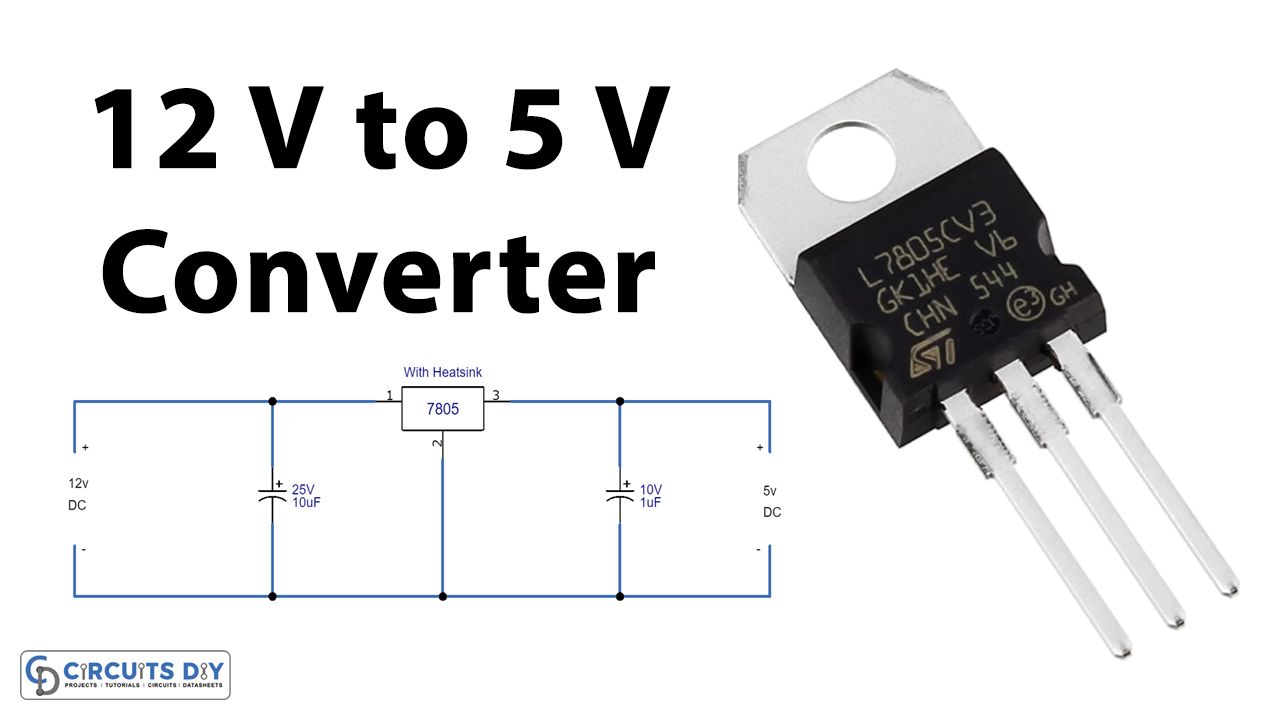So ever wondered how come some circuit takes a 12V input but is internally driving LED’s Microcontrollers and other low voltage peripherals which are not even designed for such a high voltage? For a newbie, the first thought might be making a voltage divider circuit and thus supplying the desired voltage as such, but this is not how it’s done.
The losses in a voltage divider circuit and the uncertainty of a load that does not have a fixed resistance makes this hardly the best possible way to tackle it. So that is where a regulator IC comes in such as the infamous 7805.
The 7805 is used a lot in circuits with a minimum footprint required to convert their voltage from a higher level to 5V. The component list is very small and is great for hobby and semi-professional to professional-grade projects in general. So let’s get started!

Hardware Components
The following components are required to make a 12v to 15v Converter Circuit
| S.no | Component | Value | Qty |
|---|---|---|---|
| 1. | Voltage Regulator IC | LM7805 | 1 |
| 2. | Electrolytic Capacitor | 10uF, 1uF | 1 |
| 3. | Power Source | 12V | 1 |
| 4. | Heatsink | – | 1 |
| 5. | Breadboard | – | 1 |
LM7805 Pinout

For a detailed description of pinout, dimension features, and specifications download the datasheet of LM7805
12v to 15v Converter Circuit

Working Explanation
The 7805 totally works in heat dissipation of the extra energy it receives to reduce the voltage, so it may not be ideal but gets the job done for most cases. So what’s happening is that on the input side you give the 12V DC input and the IC regulates that voltage and gives an output of ideally 5V (4.8V to 5.2V as per its datasheet).
The capacitors are there to smooth out certain spikes due to increased current requirements. The energy gain is lost in terms of heat, thus it is always advisable to attach a heatsink.
Applications & Uses
- For hobby projects use a 12V Lead Acid Battery to power up microcontrollers and motors.
- Making a DIY Power Supply with 5V and 12V Outputs.
- Protection Circuitries
- Current Regulator.













